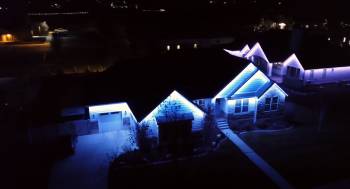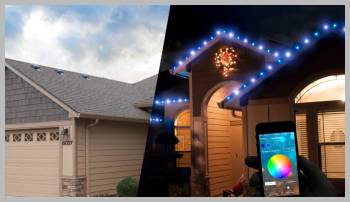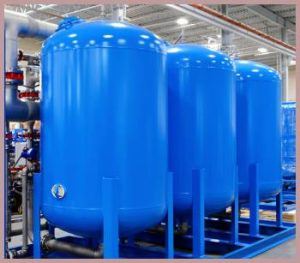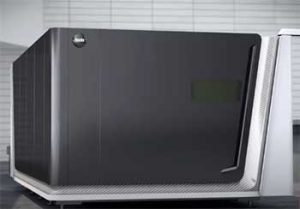Lighting plays an essential role in setting the ambiance and atmosphere of any space. With the rapid advancements in technology, we now have a variety of lighting options to choose from. Two popular options in the market today are Jellyfish Lighting and Everlight.
In this comprehensive article, we will delve into the world of Jellyfish Lighting and Everlight, compare their pros and cons, and provide you with a better understanding of which might be the best choice for your needs.
A Brief Comparison Table
| Features | Jellyfish Lighting | Everlight |
| Primary Focus | Outdoor lighting | Indoor and outdoor lighting |
| Customization | High (Colors, patterns, animations) | Moderate (Limited options) |
| Energy Efficiency | Yes | Yes |
| Durability | High (Weather-resistant) | High |
| Ease of Use | Intuitive app | Standard controls |
| Price | Expensive | Affordable |
| Installation Requirements | Professional installation required | Varies (some may require professional installation) |
| Best for | Outdoor ambiance and personalization | Versatile lighting needs for residential and commercial spaces |
Jellyfish Lighting: The Glow in Your Home
Jellyfish Lighting is a cutting-edge LED lighting system that provides a unique and customizable experience for homeowners.
Their primary product is an outdoor lighting system that offers a wide range of colors, patterns, and animations to help create the perfect ambiance for any occasion.
Let’s explore the benefits and drawbacks of this innovative lighting solution.
Pros of Jellyfish Lighting

- Customization
With Jellyfish Lighting, users can customize their lighting experience by choosing from an extensive range of colors, patterns, and animations. This allows for a unique and personalized touch to any outdoor space.
- Energy-efficient
LED lights are known for their energy efficiency, and Jellyfish Lighting is no exception.
These lights consume less power compared to traditional lighting options, making them an eco-friendly choice for homeowners.
- Durability
Jellyfish Lighting systems are designed to withstand harsh weather conditions, ensuring that the lights remain functional and reliable for years to come.
- Ease of use
The Jellyfish Lighting system comes with an intuitive app that makes it easy for users to control and customize their lighting experience.
Cons of Jellyfish Lighting
- Expensive
The primary drawback of Jellyfish Lighting is its price. The cost of installation and the system itself can be relatively high, making it a less accessible option for some homeowners.
- Limited to outdoor use
Jellyfish Lighting is specifically designed for outdoor use, which means it might not be suitable for those looking to enhance their indoor spaces.
Everlight: The Everlasting Luminescence

Everlight is another popular LED lighting option that focuses on providing energy-efficient and durable lighting solutions for both residential and commercial spaces.
They offer a wide range of products, from indoor LED lights to outdoor streetlights and architectural lighting. Let’s examine the pros and cons of Everlight products.
Pros of Everlight
- Energy efficiency
Like Jellyfish Lighting, Everlight also uses LED technology, making it an energy-efficient lighting option.
- Wide product range
Everlight offers a diverse range of lighting products that cater to various needs, including indoor and outdoor lighting for residential and commercial spaces.
- Durability
Everlight products are built to last, ensuring that customers receive a reliable and long-lasting lighting solution.
- Affordability
Everlight’s products are generally more affordable compared to Jellyfish Lighting, making them a budget-friendly option for many.
Cons of Everlight
- Less customization
Everlight products don’t offer the same level of customization as Jellyfish Lighting systems. While they still provide a variety of lighting options, they might not cater to users looking for a more personalized touch.
- Installation complexity
Some Everlight products may require professional installation, which could add to the overall cost and inconvenience.
Frequently Asked Questions (FAQs)
Yes, Jellyfish Lighting can be relatively expensive compared to other lighting options. The cost of the system and installation might be a deterrent for some homeowners.
Everlight is a competitor to Jellyfish Lighting, offering a range of LED lighting products for both residential and commercial spaces.
Jellyfish Lighting is an innovative and high-quality lighting solution, offering users a unique and customizable experience. It is energy-efficient, durable, and easy to use, making it a popular choice for those seeking a premium outdoor lighting option.
Jellyfish Lighting is similar to EverLights in terms of offering LED lighting solutions. Both companies provide energy-efficient and durable lighting options, but Jellyfish Lighting focuses primarily on outdoor lighting with a higher degree of customization.
Everlight products are generally more affordable compared to Jellyfish Lighting. However, the cost may vary depending on the specific product and installation requirements.
Warm white LEDs, with a color temperature of around 2700K-3000K, are considered to be the best for the eyes. This color temperature mimics natural sunlight and reduces the strain on the eyes, making it ideal for both indoor and outdoor use.
The Verdict: Jellyfish Lighting vs Everlight
Ultimately, choosing between Jellyfish Lighting and Everlight comes down to your specific needs, preferences, and budget. If you prioritize customization and are looking for an advanced outdoor lighting solution, Jellyfish Lighting is an excellent option. On the other hand, if you’re seeking a more affordable and versatile lighting solution for both indoor and outdoor spaces, Everlight might be a better choice.
Both Jellyfish Lighting and Everlight offer unique benefits and drawbacks, and this article has provided a comprehensive comparison to help you make an informed decision. Whichever lighting solution you choose, remember to prioritize energy efficiency, durability, and the impact on your eyes, ensuring that your space is both comfortable and inviting.




This review doesn’t reflect vast knowledge of these products. I’m not sure where you did your research
I installed both Jelly fish ,an Everlights both are good but Everlights could be way better if they would just use out door power supplies.Ive suggested this but I got told I’m not a engineer:) but I am lol so idk.But when it rains they don’t don’t work.,They short out..The zones are not water proof either.Jelly fish is more expensive but it does way more an always works.Ive had just a few repairs with Jelly but with Everlights it’s a never ending problem that will never get fixed as long as Quinton keeps using interior power supplies..An fixes their over heating issues in the summer.An part of that is because they use the Lrs power supplies an they mount it in a box out side.Lrs are known to over heat..An they are for interior an we use them for trade shows an toe kicks.Not to power as much as they try too..Again I told them this an I just would get told I’m not an engineer an that they had engineers design this system:) That being said they do have new stuff coming out so maybe they’ll have these issues fixed..